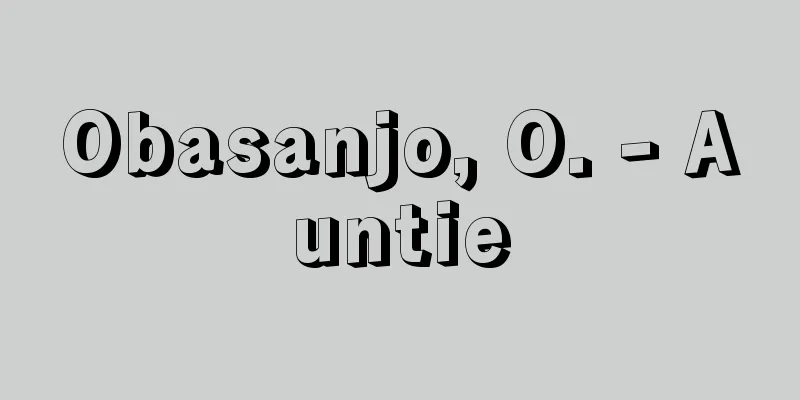Psychosomatic medicine - shinshinigaku (English spelling)

|
It is a medical science that takes the position that the mind and body are one and the same in a person, and that physical health is impossible without mental health. It comprehensively grasps the pathology of illnesses in various clinical fields from both the mental and physical perspectives, and provides treatment based on the relative importance of the factors involved in each. It is also known as psychosomatic medicine. Psychosomatic medicine began as a study of the mind-body correlation in neurosis, then expanded to focus on psychosomatic disorders, and is currently developing into comprehensive medicine. Possible backgrounds to this include the ability to understand the mind based on psychoanalytic theory and learning theory, advances in psychophysiology and cerebral physiology, criticism and reflection on the overemphasis on the body and organs that has accompanied the specialization of medicine, which has led to the development of a stance that focuses on the sick person rather than the disease, and on the whole rather than on individual organs, and the noticeable increase in mental stress that accompanies changes in the social environment, such as a controlled or competitive society, human alienation, and diversification of values. The characteristics of psychosomatic treatment methods are that they provide patients with thorough feedback about their illness, help them organize and analyze their own problems, and then help them solve them, encouraging them to exercise self-control in their daily lives. In Japan, the Japanese Society of Psychosomatic Medicine was founded in 1960, and in 1988 the first department of psychosomatic medicine was opened at the Kyushu University School of Medicine, with the department of psychosomatic medicine established. [Kouzo Shimosaka] "Introduction to Mind-Body Medicine by Naka Ishikawa" (1978, Nanzando) [Reference] | |Source: Shogakukan Encyclopedia Nipponica About Encyclopedia Nipponica Information | Legend |
|
人は心psycheと肉体somaとが一体をなすものであり、心の健康なしには肉体の健康もありえないという立場をとり、広く臨床各科の疾患を心身の両面から総合的に病態把握し、それぞれが関与する因子の比重に応じて治療を行う医学で、精神身体医学ともいう。 心身医学は、神経症における心身相関の研究に始まり、心身症を対象とするようになり、現在では総合医学へと発展しつつある。その背景として、精神分析学の理論、学習理論などに基づく心の理解が可能となったこと、精神生理学や大脳生理学の進歩がみられたこと、医学の専門細分化に伴う身体偏重や器官偏重に対する批判および反省から、病気よりも病人を、個々の器官よりも全体をみるという立場が生まれてきたこと、管理社会や競争社会、あるいは人間疎外や価値観の多様化など社会環境の変化に伴う精神的ストレスの増加が目だってきたこと、などが考えられる。 心身医学的治療法の特徴は、患者に病気の情報をよくフィードバックし、自分自身の問題点をよく整理して分析したうえで解決させ、日常生活において自己制御(セルフコントロール)を図るように仕向けていくことにある。 なお、日本では1960年(昭和35)に日本精神身体医学会が設立され、63年には九州大学医学部で初めて精神身体医学講座が開かれ、診療科としての心療内科が設置された。 [下坂幸三] 『石川中著『心身医学入門』(1978・南山堂)』 [参照項目] | |出典 小学館 日本大百科全書(ニッポニカ)日本大百科全書(ニッポニカ)について 情報 | 凡例 |
<<: Chronicles of the Regent of Shinshin-in
>>: Interrogation - Gehör; Anhörung
Recommend
Imperial Household Ministry
〘Noun〙① One of the eight ministries of the Daijoka...
Uchiwarukou - Uchiwarukou
...In addition to the narrow-leaved hawkweed, oth...
Taisei Corporation - Taisei Construction
The only non-family-owned company among major cons...
Japanese schools - nihonjingakko (English name) full-time schools for Japanese
A school established for the purpose of educating ...
Kraft durch Freude (English spelling)
...The huge German Labor Front, Deutsche Arbeitsf...
International Monetary Fund
…The abbreviation for the International Monetary ...
axiology - English
It refers to the philosophy of value that focuses...
Tama [city] - Tama
A city in central Tokyo. It was incorporated as a ...
Outside the Waves - Outside the Waves
A lake located in the southeast of Ibaraki Prefec...
Gakidana - Gakidana
A shelf set up for the dead during the Bon festiva...
Rhinoplax vigil
...Length is 38-125cm. The smallest species is th...
Pseudowollastonite
...There are several other polymorphic structures...
Arlberg Skiing - Arlberg Skiing
A type of Austrian skiing technique invented by H....
hexagonal closest packing of spheres
...Therefore, the closest packing of spheres can ...
Haruko Ichijo
...The date of the Nyogo's entry into the Imp...









